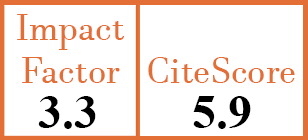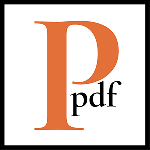Review
The potential role of neutrophils in connective tissue disease-associated interstitial lung disease
H. Wang1, Y. Lu2, J. Liu3, Z. Sang4, W. Fan5, Y. Liu6, J. Lin7
- Stem Cell and Biotherapy Technology Research Center, School of Life Science and Technology, Xinxiang Medical University, Xinxiang, China.
- Stem Cell and Biotherapy Technology Research Center, School of Life Science and Technology, Xinxiang Medical University, Xinxiang; and Xinxiang Key Laboratory of Diagnosis of Autoimmune Disease and Precision Pharmacotherapy, Xinxiang Central Hospital, Xinxiang, China.
- Xinxiang Key Laboratory of Diagnosis of Autoimmune Disease and Precision Pharmacotherapy, Xinxiang Central Hospital, Xinxiang; and The Fourth Clinical College of Xinxiang Medical University, Xinxiang, China.
- Stem Cell and Biotherapy Technology Research Center, School of Life Science and Technology, Xinxiang Medical University, Xinxiang, China.
- Xinxiang Key Laboratory of Diagnosis of Autoimmune Disease and Precision Pharmacotherapy, Xinxiang Central Hospital, Xinxiang; and The Fourth Clinical College of Xinxiang Medical University, Xinxiang, China. fwq.1125@163.com
- Stem Cell and Biotherapy Technology Research Center, School of Life Science and Technology, Xinxiang Medical University, Xinxiang; and Xinxiang Key Laboratory of Diagnosis of Autoimmune Disease and Precision Pharmacotherapy, Xinxiang Central Hospital, Xinxiang, China. liuyanli198512@163.com
- Stem Cell and Biotherapy Technology Research Center, School of Life Science and Technology, Xinxiang Medical University, Xinxiang; Xinxiang Key Laboratory of Diagnosis of Autoimmune Disease and Precision Pharmacotherapy, Xinxiang Central Hospital, Xinxiang; and Henan Joint International Research Laboratory of Stem Cell Medicine, School of Biomedical Engineering, Xinxiang Medical University, Xinxiang, China. linjtlin@126.com
CER19016
Review
PMID: 41105450 [PubMed]
Received: 16/06/2025
Accepted : 11/09/2025
In Press: 13/10/2025
Abstract
Connective tissue disease-associated interstitial lung disease (CTD-ILD) is a subtype of ILD that arises due to autoimmune disorders. Unlike other ILDs, CTD-ILD is strongly linked to genetic predisposition, environmental factors, and dysfunction of the immune system. The primary pathogenesis involves immune cells erroneously attacking lung tissues in the context of autoimmune diseases; however, the precise pathogenic mechanisms remain elusive. As core driving factor of autoimmune diseases, immune cells play a pivotal role in the development of CTD-ILD. Neutrophils, key components of the innate immune system, are responsible for defending against infections and are critical in orchestrating immune responses. Notably, neutrophils can combat infections through phagocytosis or by releasing neutrophil extracellular traps (NETs). Recent studies have revealed significant dynamic changes in the quantity and function of neutrophils during the progression of CTD-ILD, highlighting their crucial role in this process. This review not only summarises the clinical manifestations of ILD associated with autoimmune diseases but also investigates the role of neutrophils in autoimmune diseases and inflammation, offering insights into the development of novel therapeutic strategies targeting abnormal neutrophil activity in CTD-ILD.


